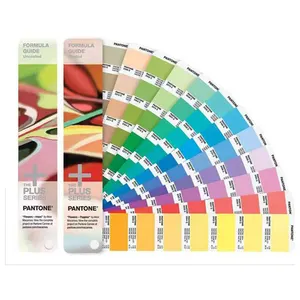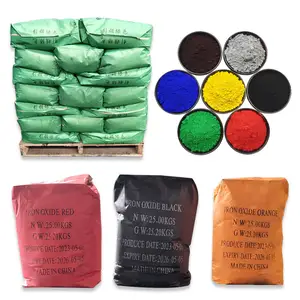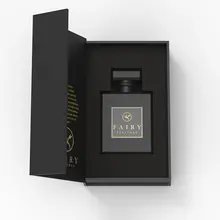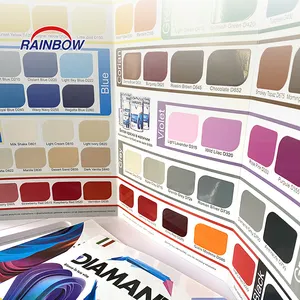A Pantone color chart is a visual tool that displays a range of colors in an organized and systematic manner. It is used to help identify, compare, and select colors. A color chart consists of a grid or a series of panels that display individual colors. Each color is assigned a name or number for easy reference and identification. A color chart includes a wide range of colors showing a variety of shades, tints, or tones of each color.
Application Areas for Pantone Color Charts
Color charts are essential in graphic design and printing and in selecting and reproducing colors accurately. They are used to choose colors for logos, branding materials, illustrations, or layouts. Printers refer to color charts to ensure accurate color reproduction during the printing process. They used to select paint, fabric, and wallpaper colors in interior design and home decor. Pantone color wheels help them visualize and compare different color options, ensuring harmonious color schemes and coordination.
Fashion and textile industries use Pantone color swatches to determine and communicate specific shades for fabrics, yarns, and threads. Designers and manufacturers refer to color charts to ensure consistency in color across different batches or production runs. Fashion designers also use color charts to create color palettes for their collections.
Pantone color samples are often used in photography and film production to ensure accurate color representation and correction. They are references during post-processing to adjust and balance colors in photographs or video footage. Color charts are widely used in the cosmetics and beauty industry for selecting and matching makeup shades. Makeup artists and consumers use color charts to find the right foundation or nail polish shade that suits their skin tone.
Key Features of Pantone Color Charts
The primary feature of a Pantone chart is the presence of color samples or swatches. These are small, individual patches or squares that display the actual colors. Each color sample is labeled with a name, number, or code for easy reference and identification. A color chart often showcases a wide range of colors. It may include primary colors, secondary colors, and tertiary colors. The chart may also have shades, tints, or tones of each color, allowing for a complete display of color variations.
Pantone color cards are organized systematically to facilitate easy navigation and comparison. Colors are usually arranged logically by color families, color wheel arrangement, or numerical sequence. This organization helps users locate specific colors and identify color relationships. Color charts strive to maintain color accuracy and consistency. They are created using precise color standards and calibration to ensure that displayed colors resemble their real-life appearance. Each color sample on a color chart is accompanied by a name or code that uniquely identifies the color. This naming or coding system helps in accurate color communication and referencing.








































 浙公网安备 33010002000092号
浙公网安备 33010002000092号 浙B2-20120091-4
浙B2-20120091-4